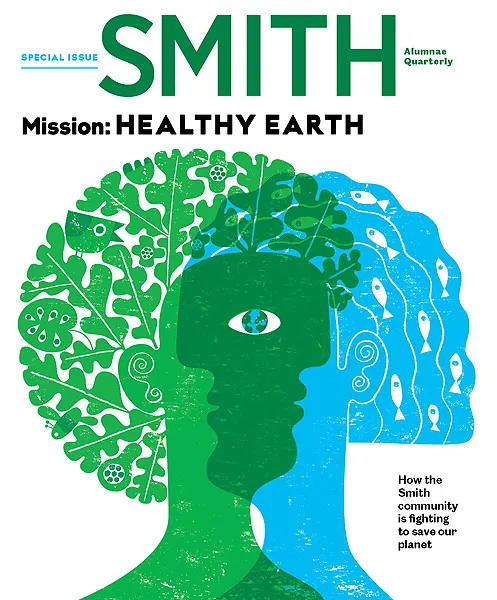The Big Apple’s Eco Champion
Alum News

Published March 25, 2020
Some people work their entire lives to find a career that they love. But Marjorie Clarke ’75 chalks up her success as an environmental scientist and activist to nothing more than what she calls “dumb luck.”
That luck has paid off in big ways, especially for residents of New York City.
For the past 40-plus years, Clarke, who holds a doctorate in earth and environmental sciences from the City University of New York, has worked tirelessly to improve the environment in one of the biggest and busiest cities in the world. “Why help New York City?” says Clarke. “Well, it’s just what I do. I’m a problem solver.”
Here are six powerful ways that Clarke, a geology major at Smith, has cleaned up the Big Apple, making it a shinier, better place to live and visit.
1. Eliminated Polluting Incinerators in Apartment Buildings
Back in the not-so-good old days of New York City, many apartment buildings had garbage-burning incinerators. In Clarke’s own building, the incinerator was always malfunctioning. “I realized this can’t be good,” Clarke says. “We were breathing in dioxin emissions and God knows what else.” So with a strategic call, she got her building’s incinerator shut down, then joined a citizens advisory committee and helped push through legislation that eliminated 2,200 incinerators across the city. “They were all gone by 1993,” says Clarke. “I’m sure that saved lives.”
2. Fought to Protect New Yorkers After 9/11
Clarke saved more lives by proving the negative health effects caused by the World Trade Center fires and collapse after the September 11, 2001, terrorist attacks. “I testified at every opportunity at the city and state hearings on 9/11 about the air and the dust and the toxicity,” she says. Clarke helped co-found 9/11 Environmental Action, the main advocacy group, and worked with other scientists to write articles about how the Environmental Protection Agency should have cleaned up the city. “Without all of this, the successes that followed—such as getting money for all of the people exposed—wouldn’t have happened,” says Clarke.
3. Advocated for No Waste in New York City
As an environmental scientist, Clarke has been pushing for zero-waste legislation and funding through her efforts with the Citizens Committee for New York City. “We’re trying to link zero waste to climate change,” she says. “People think that trying to do as much reduction, reuse, recycling and composting as possible is a nice thing. But they don’t realize that doing those things will help address half of the climate issue.”
4. Protected a Neighborhood
Clarke’s citizen participation in government decision-making has also had an impact on the local level. She co-founded Inwood Preservation in an effort to protect the upper Manhattan neighborhood where she lives. The goal: to fight development and retain Inwood’s character as a community of affordable, mostly low-rise housing, small businesses and large public parks. This has included taking the city to court over rezoning and halting the construction of a 27-story building. “That was just for starters,” says Clarke. “I’ve always been up for a challenge.”
5. Created an Award-Winning Neighborhood Garden
Clarke’s dedication to the environment extends to gardening—a passion that goes back to her first Mountain Day. “I visited the Quabbin Reservoir and bought a begonia plant from a roadside stand for a quarter and kept it alive for most of my years at Smith,” says Clarke. “That was my first experience in botanical growing.” So, when an Inwood assemblyman was searching for ways to help beautify an empty lot, Clarke jumped on board and spearheaded the creation of a community botanical garden. The Riverside-Inwood Neighborhood Garden (RING) just celebrated its 35th anniversary and has won myriad awards.
6. Designed Bicycle Routes
Another one of Clarke’s passions—bicycling—also started at Smith, where she rode around on a three-speed bike. After college, she joined the New York Cycle Club as a ride leader and soon found herself creating bike routes. “As a geographer and a cyclist, I am able to look at a topographic map and Google Earth to lay out first estimations of bicycle-friendly routes, for subsequent on-road testing,” says Clarke. The result: a more pleasant and Earth-friendly way to enjoy the metropolitan area and just another example of Clarke’s devotion to the environment in New York City.
This story appears in the Spring 2020 issue of the Smith Alumnae Quarterly.
SMITH ALUMNAE QUARTERLY
Special Climate Issue

Mission: HEALTHY EARTH
How the Smith community is fighting to save our planet
Photograph by Peter Ross